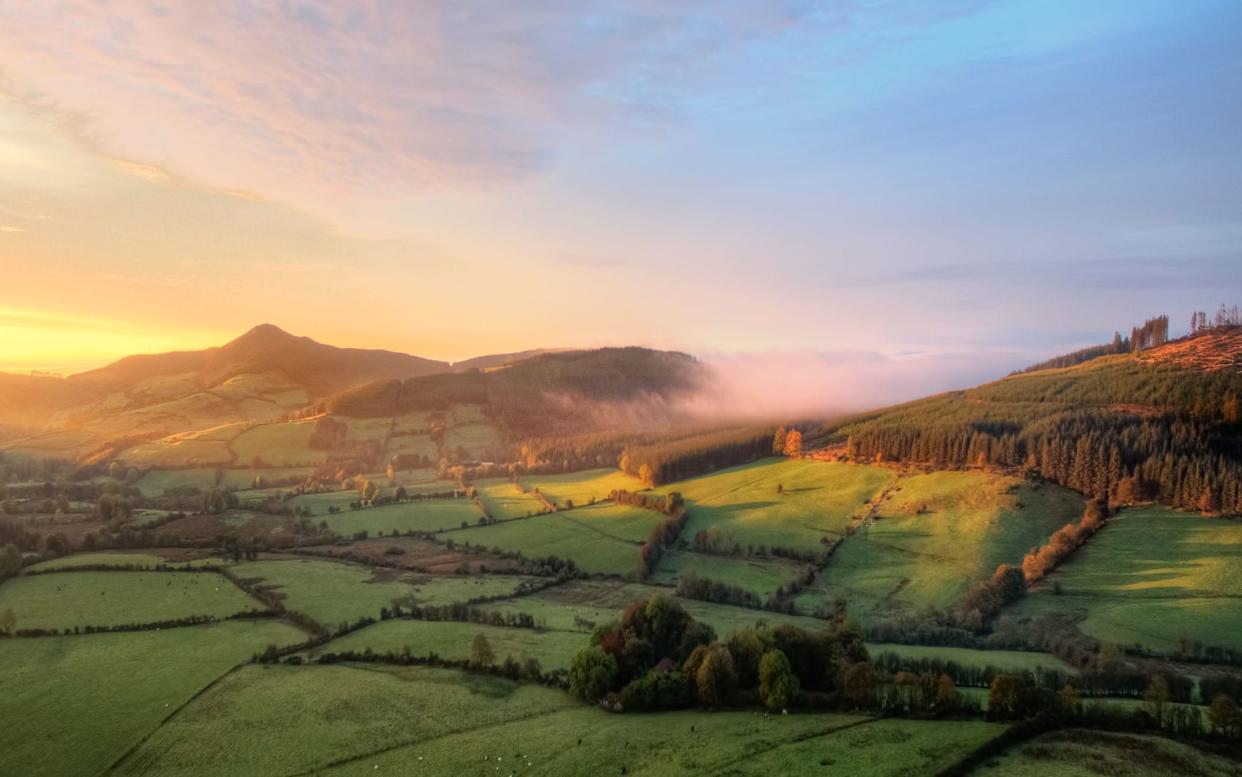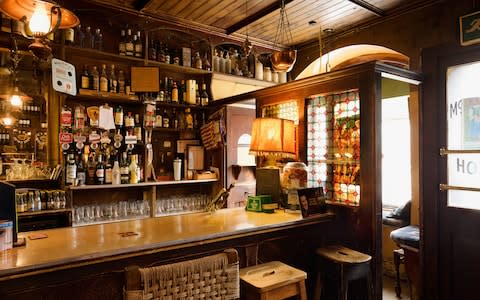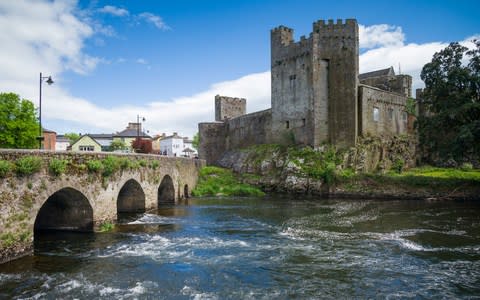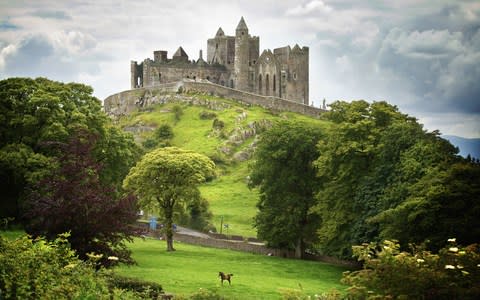Legends and glorious landscapes in Ireland's peaceful heart

Holy Trinity church stands out among the buildings as I drive into town. The surrounding land of the Golden Vale, Ireland’s most lush farmland, stretches out either side; rolling hills in the distance, fertile fields in either direction.
This is horse country. You’ll notice it throughout South Tipperary; from photos of champion geldings adorning walls to elderly men in pubs with inky fingers, scouring papers for the latest odds.
My grandmother’s brothers were all jockeys, with a fondness for a flutter too, but I’ve come to the town of Fethard in search of more cost-effective pursuits. A historic town, it was spared by Cromwell in 1650 (a rarity), and its 13th-century walls still stand.

The Fethard Horse Country Experience is a good introduction to the town’s equestrian lineage and its place in Irish history. With interactive audio-visual screens, it’s also ideal for families (or solitary, immature wanderers in their thirties), and an insight into just how big a part equestrian culture plays in the county’s culture (fhcexperience.ie; adult £6; child £2.70).
“There’s lime in the water,” says Laura, my guide. “Locals say it gets into everything, including the kettles. But it’s good for the horses,” she adds, in reference to the calcium from the limestone land beneath the Golden Vale, which aids the development of the horses’ bones, and in part explains why the region produces so many champions.
Ask people about Tipperary here, and they’ll talk in terms of North and South. The county was two administrative districts between 1898 and 2014, and while it’s been ‘one’ county officially for centuries, a friendly rivalry and cultural divide still stands. “There’s plenty to see in South Tipperary,” a local woman in Cashel tells me, when I say I’m about to drive up to Nenagh, in the north.
She’s right too. Driving in from the west of the country, my travels have taken me to Cahir Castle, one of the oldest in Ireland. Gloriously picturesque, it’s another ideal attraction for families, and currently hosts an exhibition on women’s lives in medieval Ireland. Spoiler alert: things weren’t great (heritageireland.ie/en/south-east/cahircastle; adult: £4.50; child: £2.70).

From the castle, a one-mile walk takes you to Swiss Cottage. Designed by architect John Nash in the early 1800s for the wealthy Butler family, the cottage orné is typical of a period in which the exorbitantly wealthy enjoyed playing peasant, Marie Antoinette-style. Nonetheless, it’s a beautiful building and indicative of Nash’s devotion to nature, evidenced by the fact that no two details in the small cottage are the same (Swiss Cottage (heritageireland.ie/en/south-east/swisscottage; adult: £4.50; child: £2.70).
A short drive north takes me to Rock of Cashel, eponymously named after the town in which it stands. A beautiful relic of Munster royalty, legend holds that the rock originated on Devil’s Bit mountain, 20 miles north, when St. Patrick banished Satan from a cave. Science has spoiled the story, and we now know the mountain to be comprised entirely of sandstone, unlike the limestone Rock, but for its sheer beauty and views of the surrounding countryside, it’s well worth a visit (cashel.ie/rock-of-cashel; adult: £7, child £2.70).
When I do finally venture north, historic castles give way to beautiful natural scenery and gently rolling hills. Cutting through County Clare as well as Tipperary, Lough Derg is a peaceful freshwater lake dotted with small towns, such as Garry Kennedy and Dromineer. Popular for sailing and watersports (discoverloughderg.ie/about-lough-derg), traversing its shores is as gentle or active a way to pass the time as you see fit. My father was a sailor, but I was born and reared in London, and so I opt for the lazy man’s way, driving between towns at a leisurely pace.
After eating lunch, I feel guilt-ridden for my langour, and decide I’d better stretch my legs after all so I head to Devil’s Bit, climbing a fair stretch of the mountain so I can take in the vast countryside views (discoverireland.ie) and the mountains in the distance. Out of breath, it’s a few moments before I fully appreciate the peaceful silence atop the mountain.
Tipperary is the sort of place that would speak for itself if the locals didn’t do it so well. Whether it’s ambling around a 13th-century castle or driving through meandering country roads, it’s fair to say there are worse places to horse around.

Essentials
Getting there
Cork Airport is served by Ryanair (ryanair.com) from various cities around the UK.
Drinking there
In a crowded field, O’Donoghue’s (facebook.com/pg/donoghues.bar) is furlongs ahead of the competition for the best pint of Guinness in town (£4).
Staying there
Bailey’s Hotel, located in the centre of Cashel, has comfy rooms and a distinctly Georgian feel (baileyshotelcashel.com; doubles from £99 per night).

